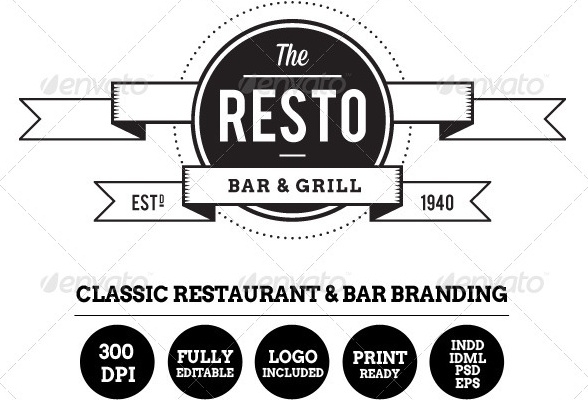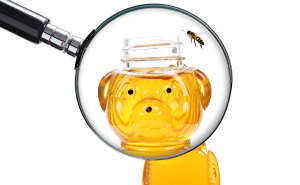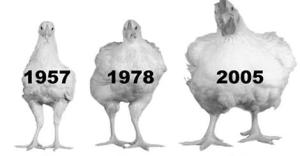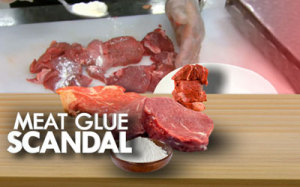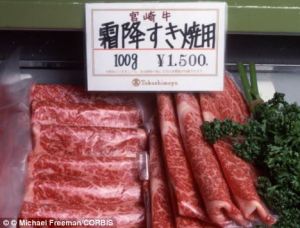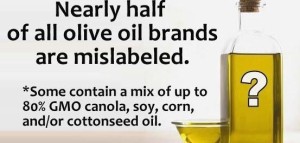The food industry is based on a series of lies that most of us just prefer to believe. We have to draw the line somewhere. Here are the six creepiest lies they are trying to feed us, and with success I unfortunately would have to say.
#6. The honey we eat and the spices we use are fake. Unless you’re fortunate enough to have your own bee hive or go down to your local organic food store where they have honey you can dispense from a beehive, most likely your honey is coming from China. Bootleg Chinese honey has all of the pollen filtered out of it to disguise its origin, and then corn syrup and artificial sweeteners are added back in. The Federal Drug Administration (FDA) says that any substance cannot be legally called “honey” if it does not contain any pollen, yet most of the “honey” tested from major retailers did not contain a trace of it. Soy sauce is another substance guilty of being synthesized. Manufacturing proper soy sauce is a long, tedious process. Imitation soy sauce only takes three days to make and has a much longer shelf life. It is made from hydrolyzed vegetable proteins, and then has caramel coloring, salt, and corn syrup added to it. The spice saffron gets it worse, in my opinion. Real saffron can gross up to $10,000 a pound, yet “top quality” saffron consists of roughly 10% of actual saffron. It usually is just ground up plant bits mixed with the real thing, other times it can be a saffron flavored gelatin that looks exactly the same, until you add water and it completely dissolves leaving behind a bland aftertaste and a patch of froth.
#5. The average chicken you eat is pumped full of weird liquids. For decades, the vast majority of chicken has been infused with other substances, up to and including beef and pork waste. Most of the time, your chicken is pumped with chicken stock, brine, and “flavor enhancers.” The method is called “plumping” and has been standard practice in the chicken industry since the 70’s. They explain that it adds juices to chicken that would otherwise be too lean and chewy. They neglect to tell you the meat is inferior they deliberately bred it to be faster and cheaper to manufacture. Food companies also tend to “plump” their chickens so that the extra substances can make up to 30% of the bird’s total weight, not to mention chicken is priced by the pound. Also, these substances can quadruple the meat’s sodium levels. Unfortunately, if the ingredients of the “plumping” substance can be described as “natural,” then the chicken can be labeled as 100% natural.
Learn More: New USDA rule allows hidden feces, pus, bacteria and bleach in conventional poultry
#4. Your meat may be formed from glued together scraps. There is a substance in the meat industry called “transglutaminase” that is intended for use by chefs who sometimes need to stick different parts of a meal together after preparation. Instead, the meat industry uses this to glue meat scraps left over from the industrialized process of turning animals into food, into a patchwork slab that resembles a single cut of meat. Since the process leaves no trace and is not required to be included in the list of ingredients, you have a minimal chance to even know it is in the meat. This also not only charges you for a prime piece of meat that consists of scraps, but makes it close to impossible to trace the source of food poisoning and can give you that uneven consistency when making stir-fry.
Learn More: Still Eat Conventional Meat or Poultry? Preservatives, Antimicrobials, Antifungals, and Viral Sprays Saturate Factory Farmed Sources
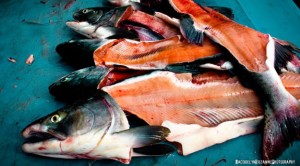
#3. Most of the salmon sold is dyed pink. Most salmon sold not labeled as wild caught is farm raised in pens on a diet of aquarium pellets, leaving the meat dull and gray. The aquarium pellets these fish are fed are infused with a line of coloring agents developed by the pharmaceutical giant Hoffman-La Roche and selected according to a color fan, not much unlike the ones you use to choose the color of your wall from a paint store. About 95% of Atlantic salmon is currently farmed, and 100% of it is dyed.
Salmon aren’t the only food that is not the color you think it is. Frank Perdue’s famous poultry with the “healthy, golden color” was actually achieved with a mix of marigold petals and dyes. Wheat bread is often dyed with molasses and brown sugar, and cheddar cheese gets its orange hue from a careful mix of coloring agents to rid batches of cheese of their inconsistent color so as not to confuse shoppers. Meat is also dyed a consistent red hue that may have ties to cancer.
#2. Kobe beef does not really exist. If you live in the United States, Europe, or Australia, you have definitely, without a doubt, have not had real Kobe beef. The strict rules that apply to Kobe beef production are not in compliance with U.S. Legislation, which makes the meat illegal. With the exception of Macau, Kobe is exclusive to Japan, and even there, can be hard to find. The term “Kobe beef” is only subject to regulation in Japan, therefore, in other countries it can legally apply to anything that doesn’t violate the “beef” part of the description. When buying something labeled as Kobe, you’re more than likely buying something with a vague explanation of being prepared “in the style” of Kobe steak, which doesn’t mean much here in the states.
#1. Olive oil is fake, thanks to the mob. Olive oil piracy is one of the Italian Mafia’s most lucrative enterprises to the extent that most olive oil on the market is greatly diluted or completely forged. Joe Profaci, said to be one of the real-life dons who inspired the character Don Vito Corleone in The Godfather, was known by the moniker of “The Olive Oil King.” Evidence suggest that olive oil racketeering has been a major problem in the world for centuries; even ancient Sumerians had a fraud squad for shady olive oil peddlers. Today, olive oil is up to 80% sunflower oil. The fact is we are so used to fake olive oil that apparently food connoisseurs reject pure olive oil because they think it tastes fake. Profit-wise, shady olive oil is comparable to cocaine trafficking.

